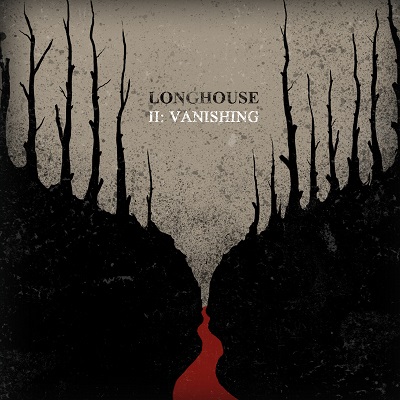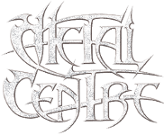In November 2016, LONGHOUSE returned to Wolf Lake Studios to record with Mike Bond (Loviatar, Norilsk, Arms of the Girl) once again as producer and engineer for the outcome to be their sophomore album entitled “II: Vanishing”. The album continues the pleasing progression of their debut while retaining the band’s core sound of heavy, intricate riffs, splashed with a touch of post-metal to guide you on a dark and visceral journey spanning nearly 40 minutes over five tracks.
Those influences can be heard in LONGHOUSE’s first single “No Name, No Marker”, a song written for the voiceless Indigenous children who were abused and died while forced to attend residential schools in Canada and were buried in unmarked graves.
“No Name, No Marker” streaming at https://longhouse1.bandcamp.com/track/no-name-no-marker-2

2. Vanishing (6:13)
3. Blood And Stone (5:57)
4. No Name, No Marker (7:59)
5. The Vigil (10:06)
Track By Track described by vocalist / bassist Joshua Cayer
1. Hunter’s Moon:
This is the beginning of the journey into the darkness and the unknown – hunting by the extended period of light provided by the last full moon before the winter settles in for the long, cold season. There is a duality in the long shadows created by the moon: an obstacle, concealing treacherous terrain and obscuring dangers in our midst; and an opportunity, providing cover to use so that we may succeed in our task. This sets the tone for the subject matter of the album.
2. Vanishing:
This is the title track of the album, and is part of our efforts to bring awareness to the issue of Murdered and Missing Indigenous Women in Canada. It is a call to recognize one of the many symptoms of the colonial process and failed attempts to assimilate Indigenous populations, as well as a way to honour and acknowledge all the brave women and girls who have come forward to share their very personal stories of abuse and victimization. The song was largely inspired by the Maclean’s article ‘It Could Have Been Me’ – http://site.macleans.ca/longform/almost-missing/
3. Blood and Stone:
This song is about recognizing the shared humanity of all people, and the intricate and complex web of relationships we share with the earth and all of creation. For Indigenous peoples, honouring and caring for these relationships is of the utmost importance. We must value all of creation, from the waters, to the plants, to the animals, to the minerals in the soil and the sky and heavens above. All relations are significant and all things have a purpose – whether it is blood, or a stone, or anything in between.
4. No Name, No Marker:
This song is written from the voice of children who died while forced to attend residential schools, and were buried in unmarked graves. Between the 1880s and 1996, over 150,000 Indigenous children were forced to attend Indian Residential Schools – church and government run industrial boarding schools. Many survivors reported suffering all levels of abuse at the hands of school staff. The mortality rates, due to poor living conditions, overcrowding, illness, abuse, and neglect were so high that in the 1920s it became policy to no longer keep record of children’s deaths. The Truth and Reconciliation Commission has recorded approximately 3201 children who died from conditions related to these schools. It is feared that the true number could reach as high as 80,000. Many children remain unnamed, and many buried in unmarked graves.
5. The Vigil:
This song was written as a collaborative effort with JD Gobeil from Loviatar. It is an exploration of stories of the Thunderbirds. They are immense birds found in First Nations stories, and are regarded as protectors of the earth. The beating of their powerful wings bring strong storms, and their eyes are the source of lightning bolts, which they use to protect the earth and humans from the horned serpents – huge snakes that dwell deep beneath the waters. Thunderbirds have the power to transform themselves and the things around them, often using this ability to teach lessons to those who would break natural laws.





































